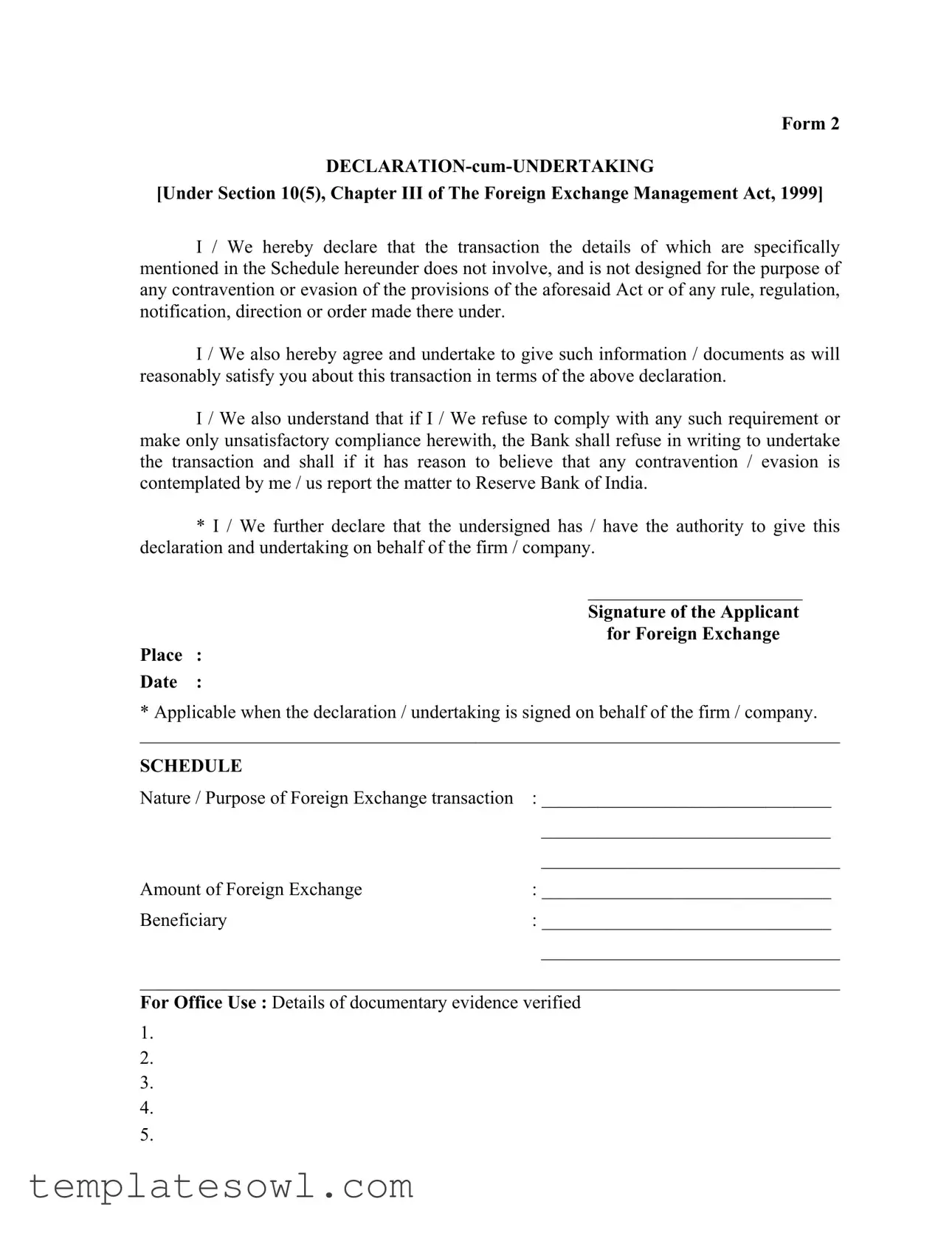What is the purpose of the Sample Undertaking form?
The Sample Undertaking form serves as a declaration by individuals or firms, confirming that their foreign exchange transactions comply with the Foreign Exchange Management Act, 1999. It ensures that transactions do not contravene any related laws or regulations.
Who needs to fill out the Sample Undertaking form?
Any individual or firm engaging in foreign exchange transactions must complete the Sample Undertaking form. This includes businesses and organizations that require foreign exchange services from a bank.
What information is required in the Schedule section of the form?
The Schedule section requires details about the nature or purpose of the transaction, the amount of foreign exchange involved, and the beneficiary's information. Providing accurate details is essential for compliance and verification purposes.
What happens if I refuse to provide requested documentation?
If you refuse to provide the necessary documentation or if your compliance is deemed unsatisfactory, the bank will deny the transaction in writing. In such cases, the bank may also report the matter to the Reserve Bank of India if it suspects any potential contravention of laws.
Is there a specific format for signing the form?
The form must be signed by the applicant seeking foreign exchange. If it is signed on behalf of a firm or company, the signatory must have the authority to act on behalf of that entity. Additionally, the place and date of signing are also required.
What should I do if I need assistance while filling out the form?
If you need assistance while completing the Sample Undertaking form, consider reaching out to your bank's customer service or a financial advisor. They can provide guidance on correctly filling out the form and ensuring compliance with relevant regulations.
Are there any consequences for making false declarations?
Yes, making false declarations on the Sample Undertaking form can lead to severe consequences. This may include legal actions, penalties, and difficulties in executing future transactions, as the bank may report discrepancies to regulatory authorities.
How does the bank verify the information provided in the form?
The bank reviews the information on the Sample Undertaking form against documentary evidence submitted. This includes checking transaction details and ensuring that all requirements are met to satisfy regulatory conditions.
Can I edit the form after submitting it?
Once the Sample Undertaking form is submitted, changes cannot be made without proper procedures. If an error is noticed after submission, contact your bank to discuss how to rectify the situation as soon as possible.
Is the Sample Undertaking form mandatory for all foreign exchange transactions?
Yes, the Sample Undertaking form is generally mandatory for the majority of foreign exchange transactions as it ensures compliance with the Foreign Exchange Management Act, 1999. This ensures that all parties adhere to regulatory requirements.
